
Candida Martinelli's Italophile Site

Main
Page This family-friendly site celebrates Italian culture for the enjoyment of children and
adults. Site-Overview
These
are links to my pages on Italy's various historical eras.
Click on the trench image above to read a concise
account of the Treaty of Versailles. The best part is actually
after the summary, where first-hand accounts by participants are
reported, giving insight into the personalities involved in the
negotionations.
Two images of Mussolini, a famously vain man, one
with hair and one without. He shaved his head when his comb-over
was no longer convincing. He had hundreds of portraits made of
himself and they hung everywhere in Italy during his
dictatorship. I recall a TV
game-show host in the 80's who asked an Italian family to produce a
portrait of Mussolini to win some money. They said they didn't
have one and sent word around to the their neighbors for help.
Within minutes, the shocked host was inundated with at least twenty portraits
of Mussolini. They won the money, but the host made a hasty
retreat from that neighborhood.
Click on the image above to read an account of
Italy and World War II. Again, after the summary are first-hand
accounts and excerpts from famous speeches and agreements.
L'Associazione
Nazionale Partigiani d'Italia della Provincia di Roma (ANPI - Roma) is
an association of resistance fighters (partigiani) and those who participated
in various ways in the war for the liberation of Italy. They are
the sponsors of a site all about that period in Italy. It is very
information, in Italian, and worth a long visit. Click on their
logo above to go to their site. Each
region in Italy has an association representing their resistance
movement, so it is well worth a search on the web if you are interested
in a specific area. The link
above on the small yet stylish logo is for the Tuscan Association.
Their site is full of information both information and moving. The
best part, in my humble opinion, is the section 'Protagonisti' that
describes many of the 'partigiani' from the Tuscan region. The
not for profit 'Resistance in Florence' site is an online version of a
multimedia project that documents the the era of Fascism and the
Resistance to Fascism and the German occupation of Italy. It is
rich with images and history, in Italian, that anyone interested in this
era should not miss. Here are a few of their images, so you can
see what I mean. This
is an aerial shot of Florence for Allied bombers to use when targeting
the city. An
Allied B26 over Florence, with an explosion in the background, from
1944. Here
you can see the transport of a bronze horse from the city to a safe area
in the woods. Many works of art were removed from the city for
protection from bombing. Others were packed in wooden pallets to
protect them from bombing and the vibrations from bombing and massive
movements of tanks and equipment through the streets of Florence. This
is a view of Florence just as Campo di Marte was destroyed by bombs from
Allied planes in 1944.
If you're a royal hobbyist, as many are in Europe,
click on the coat-of-arms of the ex-Italian royal family to see who they
are.
Another page
from this site, run by Mr. Allan Raymond, is especially interesting.
It identifies how many descendants of Queen Victoria of Great Britain
there are in the European royal families. Makes you understand
better all those inbreeding jokes they make throughout Europe about the
royal families.
This is a recent image of Emmanuele Filiberto, the
'exiled crown prince of Italy', as the Royalty.nu site calls him,
despite his being allowed to return to Italy in 2003 after swearing
allegiance to the Italian Republic and renouncing claims to rule Italy.
He married in September of 2003 in Italy.
Click on the image to read the latest Italian
royalty news. Especially interesting are the bits about the
forensic examinations being made of Medici family remains. It
seems ancient Italian princes count as royalty. At the bottom of
their page are more links, even one to Emmanuele Filiberto's official
website. He's given up the claim to the throne perhaps, but not to
the fame.
Italy
was allied with Austria and Germany before World War I broke out in
1914, but withdrew from their Triple Alliance once war was declared on
just about everybody by everybody in Europe during those insane years.
Italy finally joined the Allies near the end of the war when
promised territory in exchange for military assistance: in the north, in todayís Yugoslavia, in Africa, and
in the Middle East. But after the
Versailles Conference at which the settlements
after the fighting were determined, Italy was given only part of what
she had expected for her efforts: territory in the north.
Italian politics continued in confusion, with a plethora of
parties, few strong party leaders, and a weak King, Vittorio Emmanuele
III. But
it was mainly the failure of the conflicting post-unification policies
that lead to the growth of Fascism in the 1920s.
First the Fascists, under their founder Benito
Mussolini, played
the populist card by stoking peopleís fears and resentments,
like fears of remaining forever poor, and resentments with the rich land
owners.
Once
the Fascists gained a large populist following, they promised their
followers that the Fascists could end her humiliations in the world, and
their poverty at home.
They promised economic advancement and empire. At
the same time, Mussolini used his more fanatical followers to terrorize
his political enemies and to silence the press.
Eventually the Fascists were elected to the
Italian Parliament,
and immediately Mussolini started moves to take over the government.
The fragile state tried martial law and emergency decrees to stop
him, but failed in the end, and by commanding a large and vocal popular
support, the King allowed Mussolini to form a government in 1922. Immediately,
like the Fascists in Germany, Mussoliniís Fascists declared that they
would retain control of the country until a totalitarian state was
created, for the good of all Italians, of course.
Mussolini then: used terror tactics to silence his critics, outlawed dissent
and opposition parties, and set up a private Fascist army to do his
dirty work. For those who
keep abreast of politics around the world today, youíll recognize
shades of this happening on several continents.
In human history, there really is nothing new under the sun. There
was economic advancement under the Fascists, but that was brought about
by force, and much of the growth was in: weapons and military equipment
put to use in Spain, Albania, Somalia and Ethiopia, agriculture which
was necessary to feed the military, in
transport which was needed to
move weapons and troops. There
was also an empire put together, but it came at the end of the Era of
Empire, a time when Colonialism had made way for Imperialism.
The main difference between the two was the superior attitude of
the ďWhite Manís BurdenĒ to westernize and convert the native
peoples wherever they went. Mussolini
tried to make up for lost time, and joined the great divvying-up of
Africa. His invasion of
Ethiopia in 1935 lead to censure by the struggling precursor of the
United Nations, the League of Nations.
But just like todayís international body, the League had no
means of enforcing her edicts, and unlike today, the military powers of
the day were not willing to enforce the Leagueís edicts, so Mussolini
defied the League, leading to itís eventual demise. Mussoliniís
alliance with Hitler led the country into World War II.
Italian forces fought in Africa, and Italy was base to thousands
of German soldiers. When
ally forces under General Eisenhower took Sicily in 1943, Italian
Resistance fighters overthrew Mussoliniís Fascist government. From that point on, the war moved to Italian territory and was
between the allies including the Resistance, and Germanyís troops
stationed throughout the country. The
fighting was fierce, and at times brutal.
War crimes are still being pursued today. All
through these years, Italian writers wrote, even some in the face of
persecution by the Fascists, and some supporting the Fascists.
But it is also the writing of this period, and just after the
wars, that opened the worldís eyes to the modern Italian literature
of Pirandello, Svevo, Moravia, Levi, Calvino Sciascia, Ginzberg,
Quasimodo, Morante, to name a few. Mussoliniís
actions after the overthrow of his government were something out of a
perverted Goldoni farce. He
escaped to the north of the country with his mistress, declared it his,
set up a new government, and planned his return to retake the rest of
Italy. When the Resistance
fighters took the area, the leader of the group killed both Mussolini
and his mistress. When
asked why he didnít just arrest them, he said, to paraphrase: that it was
better for the country to avoid letting a rabble-rouser and
grand-stander like Mussolini make a mockery of Italy and Italians during
his trial and afterward; the Italian people had been through enough
already. These are surely
sentiments that must reverberate with those presiding over the trial of
Milosevic in The Hague, and with those running Serbia today; and perhaps
with those who will be prosecuting Hussein in Iraq. The
costs of Mussoliniís empire building adventures, and of later
supporting Hitlerís program for European domination left little for
investment in Italy itself. Only
those things necessary to maintain control and to pursue the military
plans were addressed: the
education system, communication, industrial production, the railways.
The end of the World War Two signaled the
end of the Era of Empire. The slow acceptance
of this and the ultimate dismantling of the Empires shaped that era, and
some would say it is still shaping the happenings in the former imperial
colonies around the world. (For some
information of what life was like in Italy under Fascism, visit this
History Learning Site. After
World War II, Italy placed itself at the center of every effort to: unify
Europe, to develop itís economy and security, to resist
communismís gains in Europe. Treaties were negotiated and signed throughout the 1940s and
1950s. Italy and Italians recognized, and still recognize, that their
future is brighter when: standing side-by-side with their European
neighbors in the European Union, together with the U.S. in
N.A.T.O., and
with the world in the United Nations. The
Italian government became a constitutional monarchy under Umberto II,
but in June of 1946, Italians voted to create a republic with a cabinet
government under De Gasperi, of the Christian Democratic party.
The monarchy was abolished and the royal family left for
Switzerland, tainted by their acquiescence under Mussolini. The
Christian Democratic party, a center-right party, has until recently
dominated Italian politics. But
as is the case whenever one party dominates for long, corruption and
hubris overtook the party, and they were eventually voted out. Italyís
Economic Miracle after World War II stunned Europe and the world.
The liberal business policies reinforced by the early European
Economic Community treaties, and easily available capital under the
Marshall Plan, fuelled much pent up capitalistic energy.
Italians showed they were ready and able to join the
industrialized countries. Universal
education was enhanced, agriculture modernized, ports rebuilt for the 20th
century, shipbuilding and steel production grew to world class
levels,
all natural resources were
tapped, centuries old skills were
tapped to produce and market specialty items in foodstuffs, fashion, and
light industries. (The
theory of added-on value is the key to Italian business success.) Italyís
system of proportional representation in government leads to many small
parties and many unstable coalition governments.
Some Italians joke that there is a political party for every
political opinion. It seems
that whenever two members of a party disagree, one leaves to set up his
own party and names it after a plant (Daisy, CarnationÖ).
Despite this, the country is politically stable, and because of
this, Italy is home to one of the liveliest political systems in Europe. And
what about that banished royalty? Recently,
a descendent of the royals was allowed to return for a visit to Italy,
and he was greeted as a movie star.
Even though the monarchy was abolished, I never met an Italian
who didnít know who in Italy was a former royal relation, or what the
former royal family was doing at that moment and where they were doing
it. The royal fascination
remains, as it does in most of Europe, but for the entertainment
value rather than for political reasons.
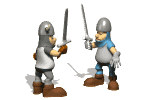
Italian
History
![]()

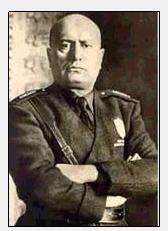
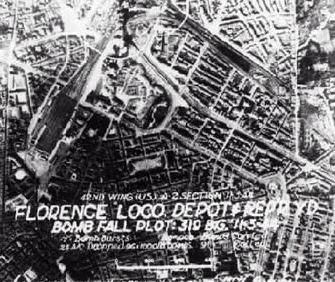
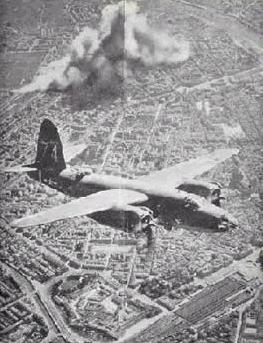
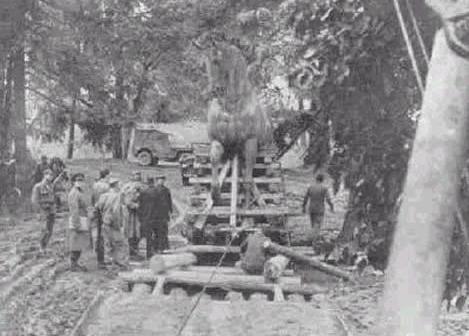

Fascism
and The World Wars
Post
War Growth and European Integration